What is HHNS? Hyperosmolar Hyperglycemic Nonketotic Syndrome is an acute metabolic complication which occurs in patients suffering from level 2 diabetes. HHNS is a dangerous disease and has a high mortality rate of nearly 20%. This is important to know so please read on!
What do You Need to Know About HHNS?
Exact mortality rates for HNNS are difficult to estimate due to number of coexisting diseases which can also attribute to fatality. Studies estimate that 4% of newly diagnosed pediatric patients in USA have HHNS and the fatality rate is nearly 12%. The incidence of HHNS is showing an increasing trend in obese adolescents and children globally and is expected to keep increasing with rising obesity rates.
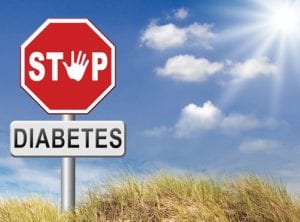
The current article provides a detailed insight into HHNS, its causes, and symptoms. It also provides details on diagnosis and treatment measures for HHNS.
Causes of HHNS
HHNS is triggered by different precipitating factors. These precipitating factors are divided into six categories- infections, medications, non-compliance to medication, undiagnosed diabetes, substance abuse, and coexisting diseases.
Among these, infections are the most common cause for triggering of HHNS. Infections like pneumonia, often gram negative, followed by urinary tract infections and sepsis. Sepsis is a deadly condition!
Non-compliance to diabetic medication is the second most common precipitating factor for causing HHNS. Undiagnosed diabetes can also trigger HHNS as the diabetes was unidentified due to failure to detect early symptoms.
Substance abuse like excessive consumption of alcohol, cocaine, etc. can also cause onset of HHNS in diabetic patients. In children, long-term use of steroids and gastroenteritis are common causes for triggering HHNS.
Symptoms and Warning Signs
HHNS is a serious condition caused by very high blood sugar levels. It mostly occurs in people suffering from level 2 diabetes. In this condition, the body tries to reduce the excess blood sugar by passing it off to the urine.
HHNS should be treated immediately as it can develop into a life-threatening disease if left untreated. HHNS can take few days to weeks to develop in patients.
Some of the most common symptoms and warning signs of HHNS include high blood sugar levels of 600 mg/dL or 33.3 millimoles per liter or even higher. Patients suffering from HHNS suffer from high dehydration levels, excessive thirst, dry mouth, warm and dry skin, fever, hallucinations, etc. Patients can also suffer from weakness, visual disturbances, and cramps. So you can see that this is a serious condition!
Nausea and vomiting can also happen in some patients. Going ahead, patients develop neurologic symptoms like lethargy, confusion, hemiparesis, seizures, and even coma. The extent of neurologic damage is related to effective serum osmolarity. Coma can occur if the serum osmolarity is more than 350 mOsm per Kg. In advanced stages of HHNS, patients can also experience drowsiness and gradual loss of consciousness.
It is recommended that patients should seek emergency care if their blood sugar level crosses 400 mg/dL or 22.2 mmol/liter. They should not wait for the blood sugar levels to go higher and develop into HHNS. Patients should also ensure to take their diabetic medication regularly without fail. They should keep monitoring their blood sugar levels on a regular basis and can seek medical care once the blood sugar levels increase excessively.
Diagnosis
HHNS is an aggravated form of diabetes which requires early identification and prompt diagnosis. Delays in identification of HHNS symptoms and diagnosis are the major factors which cause high mortality associated with the disease. There’s no mistake that avoiding HHNS is a must!
The symptoms of HHNS are not very specific to it which causes difficulties in its identification which again leads to delays in seeking medical attention and treatment by the patients. Patients usually do not have much knowledge about glucose intolerance and they end up experiencing polyuria, polydipsia and weight loss due to osmotic diuresis.
Patients suffering from HHNS usually have poor skin turgor which is resulted generally due to high degree of dehydration. Other physical observations can include dry buccal mucosa membranes, soft and sunken eyeballs, rapid pulse, etc.

If patients are suffering from fluid depletion but have an increased urine output and experience depressed mental state, then their physician will have a strong reason to get them tested for HHNS.
Patients will have very high blood glucose levels greater than 600 mg per dL and serum osmolarity greater than 320 mosm/kg.
The sodium levels of patients can fluctuate due to increased blood glucose levels due to suffering from HHNS. It is important to address and correct the sodium levels by administering fluids.
Treatment or Management of HHNS
The key steps in treatment of HHNS are detailed below:
Fluid Replacement
Patients suffering from HHNS experience dehydration and lack of fluids. The first step in treatment of HHNS is to start with fluid replacement after assessing the degree of fluid deficit in patients which helps to reestablish tissue perfusion. Fluid replacement is done with a view to restore intravascular volume for adequate perfusion of the brain, heart, and kidneys.
The nature and quantity of fluids being given should be decided judiciously as it can impact the patient’s health significantly. If you use isotonic fluids, it can lead to fluid overload while usage of hypotonic fluids will be too fast for fluid replacement and can correct the fluid deficit too quickly. In such instances, the patients can suffer fatality also.
It is recommended to start with 1L of saline per hour. If it is observed that the patients in going through hypervolemic shocks, then you may need to administer plasma expanders in such situations. For patients suffering from cardiogenic shocks, you need to conduct hemodynamic monitoring on a regular basis.
Once the patient is stabilized and the vital signs like pulse, blood pressure, etc. are normal then 0.45% normal saline should be provided to them at the rate of 0.1 units/Kg/hour. After administering normal saline, if the sodium concentration still continues to be low, then you should provide a higher concentration-0.90%- of normal saline.
The serum glucose level should be monitored intensively and if it is less than 300 mg per dL, you should administer fluids of 5% dextrose solution along with a 0.45% normal saline. The timing of providing fluids is also important.
The fluids should be given to the patients with proper timelines. It is recommended to administer 50% of the fluids to the patients within the first 24 hours. The remaining 50% fluid replacement can be provided during the next 24 hours. Cerebral edema can also be triggered during this treatment which can be dangerous and even fatal for the patients.
Generally, children are more at risk to develop cerebral edema during fluid replacement therapy. Considering the risks faced by children, you should ensure that the serum tonicity should be replaced back at a slower rate for children compared to adults.
==>>The Best Way to Lower Your Blood Sugar is with Curalin<<==
Electrolyte Management
Potassium replacement through electrolyte management is a common treatment for management of HHNS in diabetic patients. It is generally difficult to identify potassium deficit or depletion as the potassium levels in blood can keep fluctuating.
The changes in potassium shifts is less severe and pronounced than patients suffering from DKA (Diabetic Ketoacidosis).
The major reason for falling potassium levels is due to replacement of insulin which causes the potassium levels to fall sharply. Electrolyte management should be started for patients suffering from HHNS to reach ideal potassium levels.
It is important to track the electrolytes very closely. Ideally, it should be tracked on hourly basis or bi-hourly at the most. The cardiac activities and rhythm of the patients should also be checked regularly while electrolytes are being administered to them. Electrolytes should be administered to the patients depending on their potassium levels.
If the potassium level of the patient is below 3.3 mEq per L, then they should be provided potassium instead of insulin. It should be given as two-thirds potassium chloride and one-thirds potassium sulfate and should be administered till the potassium levels reach 3.3 mEq per L.
Potassium should not be administered if the potassium levels reaches 5 mEq per liter. It should be monitored every two hours and potassium should be provided only when the levels reach below 5 mEq per Liter.
If the serum potassium levels are in the range of 3.3 to 5 mEq per Liter, you should administer potassium in quantities of 20-30 mEq in each liter of fluid that is being provided to the patient. This will help to ensure that the serum potassium quantity is between 4-5 mmol per liter.
Insulin Therapy
Insulin therapy is another way to treat HSSN in patients. This method of administering insulin through intravenous route is preferred for patients suffering from dehydration for whom absorption of insulin from subcutaneous or intramuscular sites may not.
However, it is important to note that insulin therapy should only be resorted to after sufficient fluids have been administered to the patients.
Administering of insulin before providing sufficient fluids can turn out to be dangerous for the patients. Doing so will cause the water to move intracellularly which can aggravate hypotension or even death in the worst case.
Under the insulin therapy, the patients can be administered insulin in doses of 0.15 U per kg through intravenous method. A drip of 0.1U/kg/hour should also be provided to the patients after this. This should be administered to the point when the glucose range of patients are restored to 250-300 mg/dL. While performing insulin therapy, if the glucose levels of patient should ideally reduce by 50-70 mg per deciliter.
If the rate is not falling by this much, then it is recommended to double the dosage. Once a blood glucose level of 300 mg/dL is obtained by the insulin therapy, you can consider adding dextrose to the fluid which is being administered to the patients. The insulin should also be diluted till the resolution of mental obtundation hyperosmolarity.
Insulin therapy helps to prevent cerebral edema and hypotension which generally occur due to shifting of extracellular fluids into intracellular compartment due to lowering of blood pressure.
Identification and Treatment of the Cause
It is important to identify and treat the causes which may have led to HSSN. The past medication history needs to be examined carefully and in a detailed manner to understand if that has been a driving force for aggravation of HSSN in patients. If it is suspected that any past or ongoing medication has been a cause of HSSN, then it is recommended to reduce or stop it at the earliest.
There can be other precipitating factors like coexisting diseases, infections, substance abuse, undiagnosed diabetes, etc. which can also lead to HSSN. These potential precipitating factors should be studied and suitable corrective actions should be initiated to prevent any further aggravation of the condition.
Most patients suffering from HSSN are not recommended antibiotic medicines. It may, however, be required while culture results are awaited for patients with hypotension.
Prevention
Prevention is the best form of cure. It applies to patients suffering from HSSN also. The most basic yet most effective way to tackle HSSN is to create awareness among the patients and empowering them.
They can be made aware about the most common and critical precipitating factors and how to stay safe and protected from those precipitating factors.
They can also be made aware and informed about instituting early intervention to avoid progression of HSSN into a full-fledged emergency. Constant efforts should be made towards organizing awareness programs for the benefit of diabetes patients to prevent acute problems like HSSN.
People who are not diabetic till date, but are at risk of developing diabetes should be encouraged to go for regular check up to stay alert and protected. On the other hand, people who are diabetic should be encouraged to undertake self-monitoring of blood glucose regularly.
They should also be made to understand the analysis of glycemic records and significance of different glucose readings and how it affects them. They must also be counseled on making specific changes to their lifestyle and dietary habits to stay safe from any complications and aggravations resulting from diabetes.
Many patients have the habit of not complying with the prescribed diabetic medication, which can further complicate matters. They should be made aware of the fallouts of non-compliance with medication and should be motivated to comply with medication without fail. The patients should have sufficient access to water supply.
In case the patients live alone, then their family or friends should regularly check up on them to ensure their well-being. In addition to the patients, it is also important to capacitate and sensitize healthcare professionals to prevent onset of HSSN. They should be made aware of the reasons of occurrence of HSSN, potential symptoms, diagnosis of HSSN, prevention mechanisms, and management of HSSN.
These measures will go a long way in preventing the occurrence of HSSN in diabetic patients.
Final Thoughts
What is HHNS? Well you now know what HHNS is and what you need to do to prevent it and treat it. Don’t ignore it because it is serious business! The more you know about it and the sooner you are aware of it the better off you will be. An ounce of prevention is worth a pound of cure!
Check Out Below the Best Way
to End Your Diabetes For Good!
- Amazon Kindle Edition
- Rothchild, Sascha (Author)
- English (Publication Language)
- 336 Pages - 04/19/2022 (Publication Date) - G.P. Putnam's Sons (Publisher)
- ✅ QUICK AND EASY TO USE: Care Touch blood sugar test kit delivers results in only 5 seconds with just a 0.5µL blood sample. There is no programming needed since our blood sugar monitor kit automatically recognizes batch codes encrypted on Care Touch glucose test strips. Our state-of-the-art glucometer kit with strips and lancets includes single-touch strip ejection, so you can hygienically remove used diabetic test strips.
- ✅ EASY DIABETIC MONITORING: The blood sugar monitor kit with strips is capable of saving up to 300 readings. The blood glucose test kit also provides a continuous 14-day average of your readings, making glucose monitoring easy for you and your healthcare provider.
- ✅ PORTABLE AND HASSLE-FREE: The diabetic testing kit comes with a handy glucometer case, which means you can check your blood sugar level at home or anywhere else while staying organized. The 10-depth lancing device and lancets will help make blood sugar testing almost painless and hassle-free.
- ✅ COMPLETE DIABETIC SET: The glucose meter kit with strips and lancets includes: (1) Care Touch Blood Sugar Meter, (100) Blood Glucose Test Strips for diabetes, (1) Lancing Device, (100) Lancets for diabetes testing, (1) 3 Volt Lithium Battery, (1) Glucose meter case for your blood sugar tester and diabetic supplies
- ✅ WE CARE BECAUSE YOU CARE: You care about your health, and we care about you. Care Touch is committed to providing the best quality blood glucose monitoring systems. Our care doesn’t end when your sugar tester diabetes kit arrives at your door. We’re fully dedicated to your satisfaction. If you have any questions or concerns about your glucose monitor kit with strips and lancets - contact us at any time.
- Amazon Prime Video (Video on Demand)
- English (Playback Language)
- English (Subtitle)
- PUREHEALTH RESEARCH - Blood Sugar Formula 3 Bottles
- MANUFACTURED in the USA! 365-DAY SATISFACTION GUARANTEED!
- A DOCTOR-APPROVED NATURAL FORMULA. Seventeen potent ingredients, each scientifically proven to have a significant effect at helping balance your glucose levels, improve glucose sensitivity, protect delicate cells from free radicals, and energy
- HIGH POTENCY. PureHealth Research experts scientifically enhance CHROMIUM with the Vitamin C, E, Mulberry Leaf, Bitter Melon, Cinnamon, L-Taurine, Berberin and other ingredients which are proven to help you support healthy blood glucose levels
- ONE CAPSULE DAILY, THREE BENEFITS: supports healthy sugar and carb absorption, supports insulin levels, supports cardiovascular health
- Scientifically formulated; great care was put into combining just the right amount of 20 different ingredients into a premium formula designed to support healthy blood sugar levels
- High potency support for 365 days a year; the unique combination in this blend is crafted to help support healthy glucose absorption and glucose production by your body; contains Gymnema, Alpha Lipoic Acid, Yarrow, Licorice, Cayenne, Banaba, Guggul, Bitter Melon, Juniper Berry, White Mulberry, L-Taurine & more
- One capsule twice a day, five benefits; (1) supports normal blood sugar levels; (2) supports weight control and energy; (3) supports healthy sugar and carb absorption; (4) supports insulin levels; (5) supports heart health; daily support for healthy blood glucose levels, 365 days a year
- Reliable; made in a GMP certified facility in America and third party safety tested for purity
- Great value for money; 120 vegetarian capsules for a 60 days supply
Last update on 2022-06-23 / Affiliate links / Images from Amazon Product Advertising API

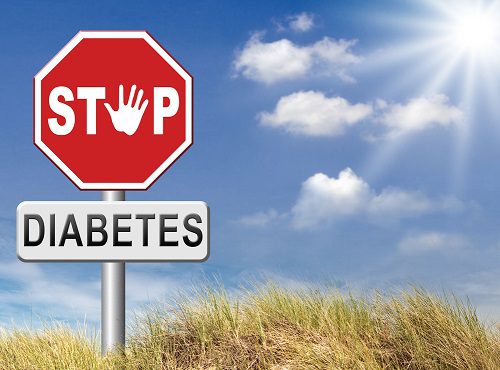

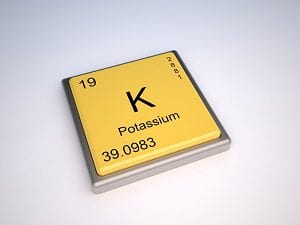
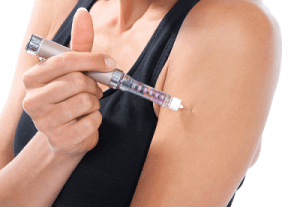
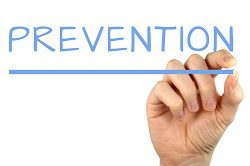








An awesome post! My grandmother had diabetes. She passed away a few years ago. My family has a history of diabetes. So my mum and I are aware of this. And we keep a healthy diet. Can this prevent us from having diabetes?
Your article has given me a lot of information about diabetes. Among insulin therapy, electrolyte management and fluid replacement, is it a must to have all of these treatments? Which treatment is the most important? What are your thoughts on this?
Hey Fiona 🙂
Thank you so much for saying 🙂
I’m sorry to hear about your grandmother. When your family has a history of diabetes, it’s up to you to do everything possible to avoid and prevent diabetes from happening to you.
Yes, a healthy diet can help prevent you from developing type 2 diabetes.
I’m not suggesting to having all of these treatments if you don’t have a family history of diabetes.
My thoughts about these treatments is that it all depends on each person’s individual situation. I would leave it up to your doctor to determine which treatments are beneficial for you.
Appreciate your sharing this 🙂
I did not know about HNNS until reading this article and I have to say that it seems that there are a lot of people that are likely susceptible to HNNS from your description of who can suffer from this condition. It is alarming that more people do not know about this and I do understand after reading why being aware of the symptoms is important.
Most certainly I am going to share this post on my social accounts and with my other friends. Some are diabetic and they either control the disease through their diet or by diet and using insulin on a regular basis. They have never spoken about this, and they would if they knew.
There are a number of things that can trigger the onset of HNNS and it can happen to anyone with the lifestyle that many have these days. I am not surprised that it is a growing health problem, and unless people are proactive and take precautions beforehand, it will continue to get worse.
Education is key to this problem and letting the vulnerable know ahead of the onset of HNNS is vital. Prevention is definitely better than the cure! Thanks for exposing this problem, you have helped a lot of people with this article!
Hey Dave,
I’m not sure many folks are aware of HHNS. This is why I wanted to provide information about it.
Many people are susceptible to it and should know about it. Severe hyperglycemia is extremely dangerous.
The most important thing anyone with diabetes can do is to control it.
The more precautions you take early on the better your chances are of not developing type 2 diabetes.
And as you say the more knowledge we have the better off we will become.
I thank you for sharing your feedback here!
Hi Rob,
Wow! I didn’t know much (enough) about Hypersmolar Hyperglycemic Nonketotic Syndrome, so I appreciate your well written and informative post. Unfortunately, diabetes and other chronic conditions continue to disable/kill too many people. It’s great to read information with words such as “reverse”, “getting rid of medications”,” improving overall health”, etc. The awesome news is that diabetes IS preventable.
As a gerontology professional, I work with older adults with dementia in a secure Memory Care community. Research is finding more evidence that links diabetes and Alzheimer’s disease. Alzheimer’s is the most common type of dementia and the 6th leading cause of death in the USA. What are your thoughts on possible connect?
Thanks for providing a great service to readers who want to become healthy and happy!
Tamara
Hello Tamara 🙂
It’s a shame what diseases such as diabetes do to people. That’s why with diabetes it’s crucial to keep it under control.
The more and better we treat conditions the healthier we can be. It’s all about control.
I give you so much credit Tamara because working in the medical field is hard enough but with dementia it makes it that much more difficult.
Alzheimer’s and dementia are things no one person ever wants. I definitely connect these two diseases with diabetes.
The fact is that I believe you can only develop Alzheimer’s if you have type 2 diabetes.
Thank you so much for sharing and for your hard difficult work in your field. 🙂